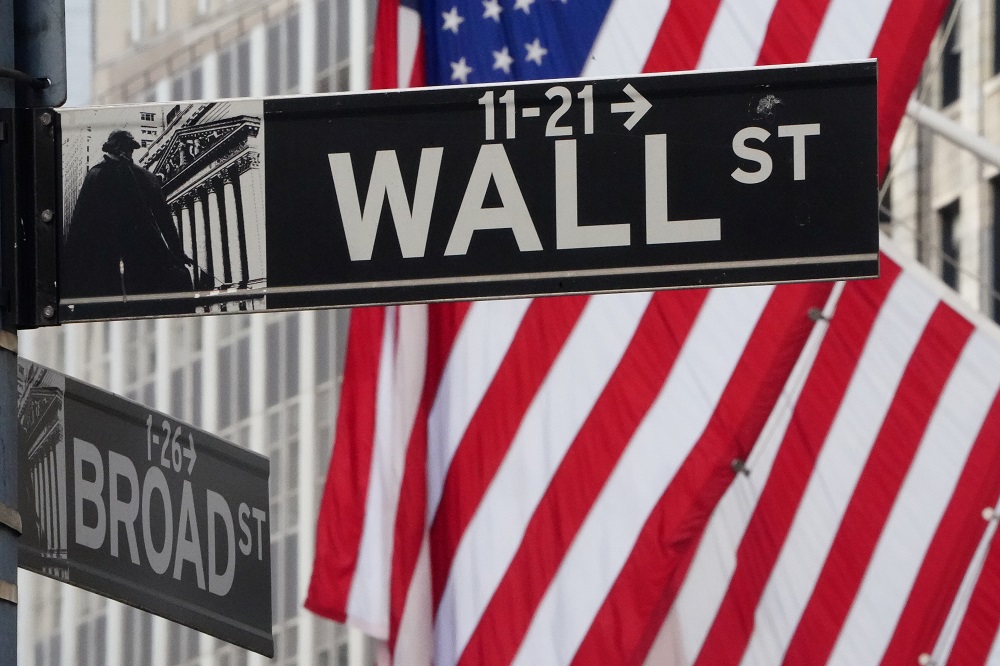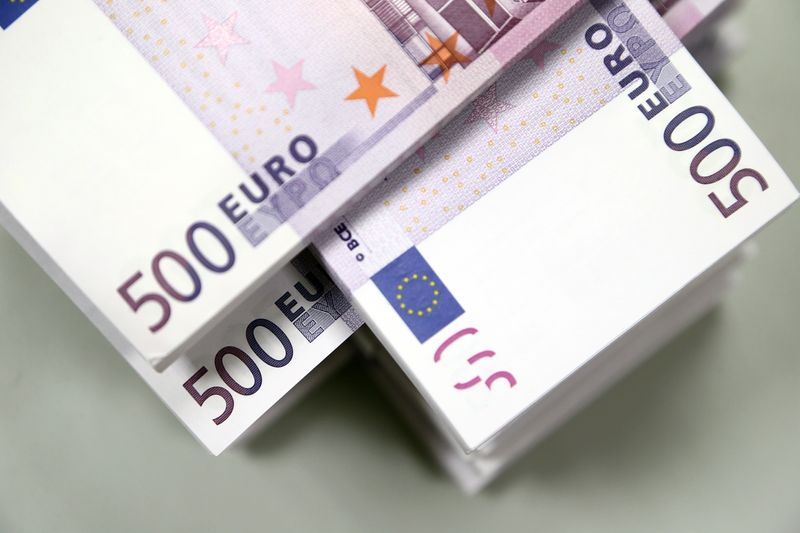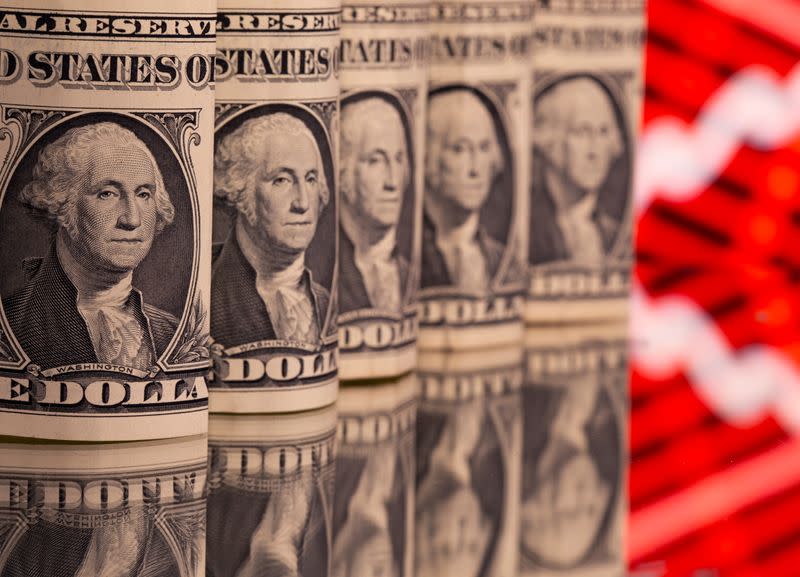WORLDWIDE: HEADLINES
U.S. IPOs hit annual record in less than six months

Wall Street’s record-breaking run for stock market flotations shows no signs of slowing down.
With more than six months until the year ends, U.S. initial public offerings have already totaled $171 billion, eclipsing the 2020 record of $168 billion, according to data from Dealogic.
Driving the IPO rush are sky-high corporate valuations in the stock market, inflated by the Federal Reserve’s low-interest rates and monetary stimulus in the wake of the COVID-19 pandemic. This has fueled a wave of speculative frenzy that benefit not just traditional companies going public, but also special purpose acquisition companies (SPACs) formed strictly to raise money through IPOs.
The IPO gold rush is set to reach new heights in the second half of 2021, as a number of high-profile startups such as China’s largest ride-sharing company Didi Chuxing Technology Co Ltd, online brokerage Robinhood Markets Inc and electric-vehicle maker Rivian Automative LLC prepare to launch multi-billion dollar share sales.
“If the markets hang in anywhere near where they are right now, we are going to be incredibly busy this summer, and into the fall with IPOs,” said Eddie Molloy, co-head of equity capital markets for the Americas at Morgan Stanley.
“Trees don’t grow to the sky forever, so you’re not going to have a record volume every year. But assuming stability, we’d also expect a busy 2022.”
Excluding proceeds from SPAC IPOs, traditional listings of big names, including South Korean e-commerce giant Coupang Inc (788.F), have raked in $67 billion this year, keeping 2021 on track to be the biggest year for such IPOs.
The average one-day gain for U.S. IPOs so far this year is 40.5%, compared with 28.2% during the same period in 2020 and 21.7% in 2019, according to Dealogic. The average one-week return for 2021 is 35.7%, higher than 32.2% in 2020 and 25.5% in 2019.
Capital markets bankers and lawyers estimate that companies could end up raising close to $50 billion through traditional IPOs, excluding SPACs, before the end of the September quarter. IPO proceeds have touched $24.1 billion in the second quarter through June 15, according to Dealogic.
Full coverage: REUTERS
Digital euro might suck away 8% of banks’ deposits -Morgan Stanley

A digital euro could suck away 8% of euro zone banks’ customer deposits, analysts at Morgan Stanley have estimated, although the share may be far higher in some of the smaller countries in the 19-nation bloc.
The European Central Bank is expected to speed up work on a digital euro in the coming months and although a formal launch could be a few years away, economists are looking at potential implications.
With 90% of the world’s central banks now working on digital currencies, a key question is whether they will cannibalize the money currently held in high street bank accounts.
Morgan Stanley’s analysts said their estimates were based on “bear case” scenario where all euro area citizens above the age of 15 transferred 3,000 euros ($3,637) into what would effectively be an ECB-controlled ‘digital wallet’.
The amount has been mentioned as a theoretical maximum or cap by some ECB policymakers and market experts.
“This could theoretically reduce euro area total deposits, defined as households’ and non-financial corporations’ deposits, by 873 billion euros, or 8%,” Morgan Stanley said.
The average loan-to-deposit ratio (LDR) of euro zone banks would increase to 105% from 97%, although banks in aggregate would “hardly notice” it as the LDR was at 105% in late 2019 before the coronavirus pushed up savings.
However, banks in smaller countries, in particular Latvia, Lithuania, Estonia, Slovakia, Slovenia and Greece, could theoretically be impacted harder than the average.
Converting 3,000 euros of deposits in those countries would be equivalent to converting 17%-30% of total deposits and 22%-51% of total household deposits.
Full coverage: REUTERS
WORLDWIDE: FINANCE / MARKETS
Dollar holds near one-month high; focus on Fed’s inflation take

The dollar held near a one-month high against a basket of currencies on Wednesday as investors tried to ascertain if the Federal Reserve might alter the language on its stimulus following a recent jump in U.S. inflation.
The dollar index stood at 90.528, having hit a one-month high of 90.677 on Tuesday despite mixed U.S. economic data.
U.S. retail sales dropped more than expected in May but sales in April were revised sharply up and are way above their pre-pandemic level.
With spending rotating back to services from goods as vaccinations allow Americans to travel and engage in other activities, the data cemented the perception of a strong recovery in the economy.
Separate data showed wholesale price inflation accelerated to 6.6%, the largest gain since November 2010.
The Federal Reserve is widely expected to acknowledge the first conversations among its policymakers about when and how fast to pare back the massive bond-buying program launched in 2020 when it concludes a policy meeting later in the day.
Yet most investors think the Fed will refrain from any hints of starting tapering its stimulus in the near future.
“The Fed has said they’re going to be reactionary to the data, ….and they’ve said they want to see extended inflationary conditions before they make any commitment to tapering or hikes,” said Bart Wakabayashi, Tokyo branch manager at State Street Bank.
Wakabayashi said the dollar should rally if the Fed drops any hint that tapering will be brought forward or rate hikes are going to be looked at sooner, but added, “I think they’ll stick to the same tagline, and it will probably end up being a non-event.”
Some market players also noted the dollar could rise by default as other major currencies appear to be losing momentum.
Full coverage: REUTERS
Wall Street ends down as data spooks investors awaiting Fed report

Wall Street’s main indices closed lower on Tuesday as data showing stronger inflation and weaker U.S. retail sales in May spooked already-jittery investors awaiting the results of the Federal Reserve’s latest policy meeting.
Assurance from the Fed that rising prices are transitory and falling U.S. Treasury yields have helped ease some concerns over inflation and supported U.S. stocks in recent weeks. All eyes are now on the central bank’s statement at the end of its two-day policy meeting on Wednesday.
Data showed an acceleration in producer prices last month as supply chains struggled to meet demand unleashed by the reopening of the economy. A separate report showed U.S. retail sales dropped more than expected in May.
“There was a bit of a reaction to the economic data we got, which, for the most part, shows that the economy is starting to wean itself off stimulus, the recovery is slowing down a little, and inflation is continuing to grow,” said Ed Moya, senior market analyst for the Americas at OANDA.
“We’re seeing some very modest weakness, and it’ll be choppy leading up to the Fed decision. Right now, the Fed is probably in a position to show they are thinking about tapering, but they’re still a long way from actually doing it.”
The Fed is likely to announce in August or September a strategy for reducing its massive bond buying program, but will not start cutting monthly purchases until early next year, a Reuters poll of economists found.
The benchmark S&P 500, the blue-chip Dow Jones and the tech-focused Nasdaq have risen 13%, 12.1% and 9.2% respectively so far this year, largely driven by optimism about an economic reopening.
However, the S&P 500 has been broadly stuck within a range, despite recording its 29th record-high finish of 2021 on Monday, versus 33 for all of last year.
The Dow Jones Industrial Average fell 94.42 points, or 0.27%, to 34,299.33, the S&P 500 lost 8.56 points, or 0.20%, to 4,246.59 and the Nasdaq Composite dropped 101.29 points, or 0.71%, to 14,072.86.
Full coverage: REUTERS
Oil up nearly 2% to multi-year highs on demand expectations

Oil prices rose nearly 2% to their highest in more than two years on Tuesday, buoyed by expectations demand will recover rapidly in the second half of 2021.
Brent crude
U.S. oil rose $1.24, or 1.8%, to settle at $72.12 a barrel. It hit a session high of $72.19 a barrel, its highest since October 2018.
Boosting prices, the world’s biggest oil traders said on Tuesday they see oil prices staying above $70 a barrel with demand expected to return to pre-pandemic levels in the second half of 2022.
Vitol Chief Executive Russell Hardy sees oil moving between $70 and $80 a barrel for the remainder of 2021 on the expectation that the Organization of the Petroleum Exporting Countries and its allies (OPEC+) keep supply discipline, even as Iran’s exports may resume if the United States rejoins a nuclear agreement with Tehran. read more
“We have had those stock draws for a couple months, the market is heading in the right direction,” Hardy told the FT Commodities Global Summit.
Trafigura Chief Executive Jeremy Weir told the same event there was a good chance prices could reach $100 a barrel because of falling reserves before the world reaches peak oil demand.
OPEC+ producers have been gradually relaxing record output curbs in recent months.
“The decision by OPEC+ to be overly cautious in returning supply to the market, whether this is true caution or they are intentionally stoking oil prices higher, has been a main tenant in seeing $73 per barrel Brent,” said Louise Dickson, oil markets analyst at Rystad Energy.
U.S. crude stocks fell by 8.5 million barrels in the week ended June 11, according to two market sources, citing American Petroleum Institute figures on Tuesday. Gasoline inventories rose by 2.85 million barrels and distillate stocks climbed by 1.96 million barrels, the data showed, according to the sources, who spoke on condition of anonymity.
Full coverage: REUTERS